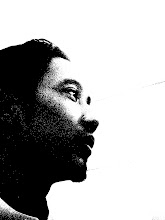
In 1919, the Bauhaus manifesto proclaims that the ultimate aim of all creative activity is a building. This meant that students participated right from the start in building projects. During the directorship of Walter Gropius, the work was mainly in his office, since the setting-up of an architecture class had been delayed. The building department, headed by Hannes Meyer in 1927, enabled an independent training in architecture based on the requirements of the later users. in 1930, the focus under Mies van der Rohe was directed more towards aesthetic aspects.
In 1919, the Bauhaus manifesto proclaims that the ultimate aim of all creative activity is a building. This meant that students participated right from the start in building projects. During the directorship of Walter Gropius, the work was mainly in his office, since the setting-up of an architecture class had been delayed. The building department, headed by Hannes Meyer in 1927, enabled an independent training in architecture based on the requirements of the later users. in 1930, the focus under Mies van der Rohe was directed more towards aesthetic aspects.
All the Bauhaus directors were architects. Their very individual conception of building, however, cannot be jointly coined: quite on the contrary, they must be seen as exponents of strongly divergent architectural concepts. The names Walter Gropius, Hannes Meyer, and Ludwig Mies van der Rohe stand for individually structured educational concepts.
In 1919, the Bauhaus manifesto proclaims that the ultimate aim of all creative activity is a building. This meant that students participated right from the start in building projects. During the directorship of Walter Gropius, the work was mainly in his office, since the setting-up of an architecture class had been delayed. The building department, headed by Hannes Meyer in 1927, enabled an independent training in architecture based on the requirements of the later users. in 1930, the focus under Mies van der Rohe was directed more towards aesthetic aspects.
All the Bauhaus directors were architects. Their very individual conception of building, however, cannot be jointly coined: quite on the contrary, they must be seen as exponents of strongly divergent architectural concepts. The names Walter Gropius, Hannes Meyer, and Ludwig Mies van der Rohe stand for individually structured educational concepts.

No comments:
Post a Comment